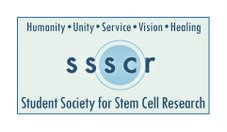Stem cell therapy rescues motor neurons in ALS model
MADISON -- In a study that demonstrates the promise of cell-based
therapies for diseases that have proved intractable to modern
medicine, a team of scientists from the University of Wisconsin-
Madison has shown it is possible to rescue the dying neurons
characteristic of amyotrophic lateral sclerosis (ALS), a fatal
neuromuscular disorder also known as Lou Gehrig's disease.
The new work, conducted in a rat model and reported today (July 31)
in the online, open-access journal from the Public Library of
Science, PLoS ONE, shows that stem cells engineered to secrete a key
growth factor can protect the motor neurons that waste away as a
result of ALS. An important caveat, however, is that while the motor
neurons within the spinal cord are protected by the growth factor,
their ability to maintain connections with the muscles they control
was not observed.
"At the early stages of disease, we saw almost 100 percent protection
of motor neurons," explains Clive Svendsen, a neuroscientist who,
with colleague Masatoshi Suzuki, led the study at UW-Madison's
Waisman Center. "But when we looked at the function of these animals,
we saw no improvement. The muscles aren't responding."
At present, there are no effective treatments for ALS, which afflicts
roughly 40,000 people in the United States and which is almost always
fatal within three to five years of diagnosis. Patients gradually
experience progressive muscle weakness and paralysis as the motor
neurons that control muscles are destroyed by the disease. The cause
of ALS is unknown.
In the new Wisconsin study, nascent brain cells known as neural
progenitor cells derived from human fetal tissue were engineered to
secrete a chemical known as glial cell line derived neurotrophic
factor (GDNF), an agent that has been shown to protect neurons but
that is very difficult to deliver to specific regions of the brain.
The engineered cells were then implanted in the spinal cords of rats
afflicted with a form of ALS.
"GDNF has a very high affinity for motor neurons in the spinal cord,"
says Svendsen. When implanted, "the (GDNF secreting) cells survive
beautifully. In 80 percent of the animals, we saw nice maturing
transplants.
The implanted cells, in fact, demonstrated an affinity for the areas
of the spinal cord where motor neurons were dying. According to
Svendsen, the cells migrate to the area of damage where they "just
sit and release GDNF."
The Wisconsin team transplanted the cells on one side of the spinal
cord and used the untreated side to compare the affects of the
transplanted cells and their chemical secretions.
"We only put the transplant in one small area of the spinal cord and
only on one side," Suzuki says. "The areas where we saw the human
cells were the only areas where we saw protection of motor neurons."
But while the motor neurons exposed to GDNF were protected, the
Wisconsin team was unable to detect the connections between the
neurons and the muscles they govern.
"Even in animals that had lots of motor neurons surviving, we didn't
see the (muscle) connection, which explained why we didn't see
functional recovery," says Suzuki.
Although the obvious next step in the research is to try and ferret
out the reasons the protected motor neurons are unable to hook up
with muscles, Svendsen suggests the work further supports movement
toward clinical trials in humans.
"We think the cells are safe, and they do increase the survival of
the motor neurons," Svendsen argues. "This may be very important for
patients that lose neurons every day. However, it's not a trivial
intervention -- you have to drill a hole in the spinal cord to get
the cells releasing GDNF in. But there are few options for these
patients and we will continue to move forward with this approach."
###
The study was supported by grants from The ALS Association and the
University of Wisconsin Foundation. Authors of the study, in addition
to Svendsen and Suzuki, include Jacalyn McHugh, Craig Tork, Brandon
Shelly and Sandra M. Klein, all of the UW-Madison Waisman Center; and
Patrick Aebischer, of the Swiss Ecole Polytechnique Fédérale de
Lausanne.
Public release date: 31-Jul-2007
Contact: Clive Svendsen
svendsen@waisman.
608-265-8668
University of Wisconsin-Madison
http://www.eurekale
«¤»¥«¤»§«¤»¥«¤»§«¤»¥«¤»«¤»¥«¤»§«¤»¥«¤»§«¤»¥«
¯¯¯¯¯¯¯¯¯¯¯¯¯¯¯¯¯¯¯¯¯¯¯¯¯¯¯¯¯¯¯¯¯¯¯¯¯¯¯¯¯¯¯¯
StemCells subscribers may also be interested in these sites:
Children's Neurobiological Solutions
http://www.CNSfoundation.org/
Cord Blood Registry
http://www.CordBlood.com/at.cgi?a=150123
The CNS Healing Group
http://groups.yahoo.com/group/CNS_Healing
____________________________________________
«¤»¥«¤»§«¤»¥«¤»§«¤»¥«¤»«¤»¥«¤»§«¤»¥«¤»§«¤»¥«
¯¯¯¯¯¯¯¯¯¯¯¯¯¯¯¯¯¯¯¯¯¯¯¯¯¯¯¯¯¯¯¯¯¯¯¯¯¯¯¯¯¯¯¯
Change settings via the Web (Yahoo! ID required)
Change settings via email: Switch delivery to Daily Digest | Switch format to Traditional
Visit Your Group | Yahoo! Groups Terms of Use | Unsubscribe
__,_._,___










